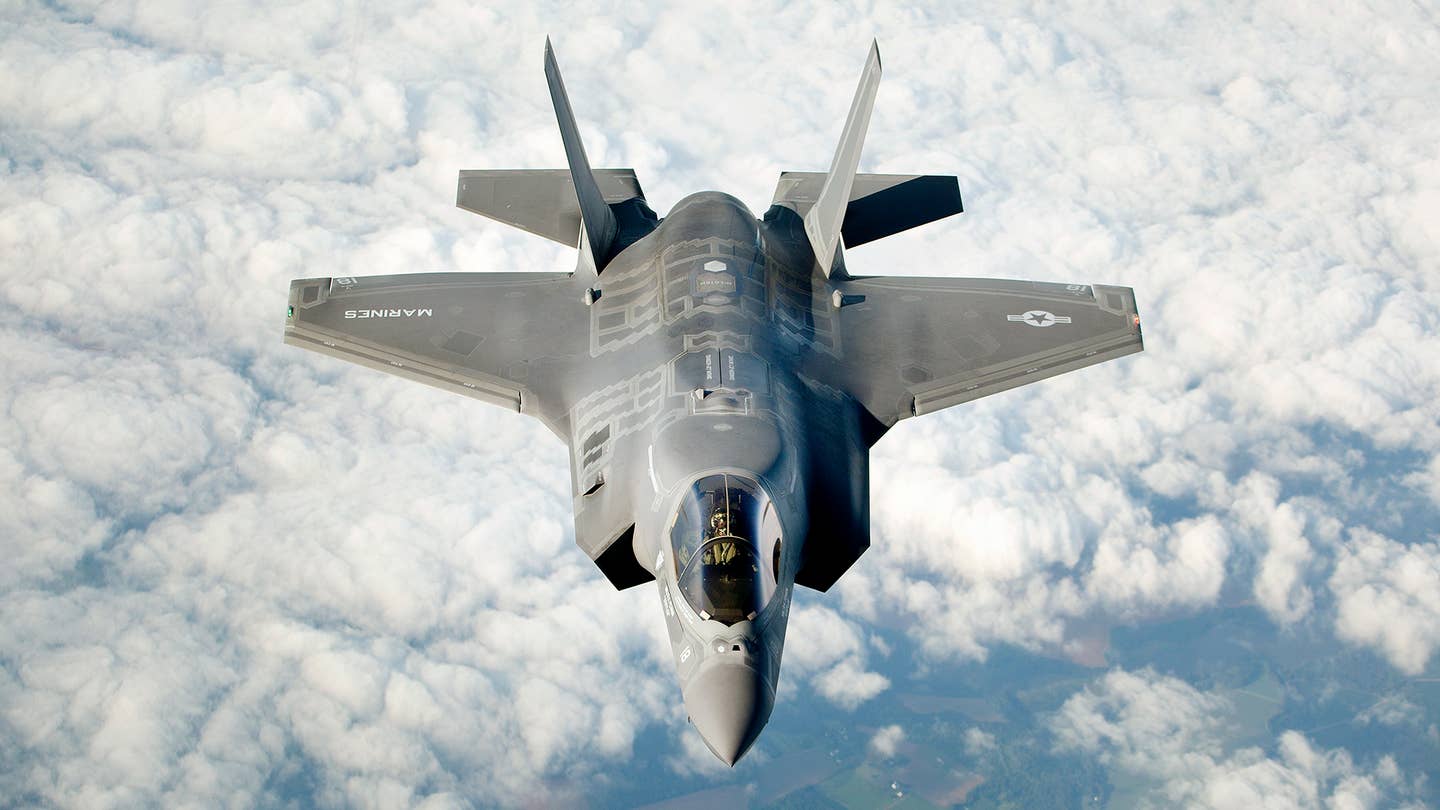The USMC F-35B may have traveled in a ‘zombie state’ after the pilot ejected, leaving its whereabouts unknown.

A strange situation is unfolding in South Carolina. An F-35B pilot ejected from their aircraft today around 2:00 PM local time in an area north of Joint-Base Charleston. The pilot landed under parachute in a Charleston neighborhood and is in stable condition, but the advanced stealth fighter they ejected from is nowhere to be found.
The F-35B originated from Marine Corps Air Station Beaufort, a master F-35B base for the USMC. It was part of a two ship flight, with the other F-35B landing safely at MCAS Beaufort. There is no information on what led up to the ejection. Based on FAA data, the search for the aircraft is underway in the Lake Moultrie and Lake Marion areas, Senior Master Sergeant Heather Stanton from Joint Base Charleston told the press. But here’s the kicker: the DoD is saying the F-35B was put on autopilot prior to the ejection.
The two lakes are located to the north of Charleston. (Google Maps)
While it sounds totally bizarre, fighter aircraft continuing on their way in a ‘zombie state’ for prolonged periods, and even coming to rest on the ground intact, long after their pilot left the cockpit, is not unheard of. The most famous instance of just such a situation was the “Cornfield Bomber,” an F-106 that landed on its belly in one piece after its pilot punched out back in 1970.
Another example that has occurred during Navy carrier ops is where aircrew ejected as their jet entered a stall state due to a ‘cold cat shot’ or engine issues while heavily laden at the start of their mission. The loss of the weight of the crew, seats, and canopy, as well as the shift in center of gravity have seen aircraft pull out of an immanent crash with nobody left onboard.
As for this incident, wven the shorter-ranged F-35B has considerable reach. On autopilot, it could have flown hundreds of miles before crashing, depending on its fuel state. We saw a similar situation with the non-responsive Citation bizjet last June, although the crew and passengers remained onboard that stricken aircraft.
F-35B’s execute a mass launch at Marine Corps Air Station Beaufort. (U.S. Marine Corps photo illustration by Staff Sgt. Brittney Vella)
The fact that the F-35 disappeared without any reports of a crash points to the likelihood that it went down in a sparsely populated area. If it ran out of fuel, there would not likely be a big fire and no massive fireball for people to spot, nor as loud of a crash. It it went down in the Atlantic, it could make finding it even harder. Also, the configuration the jet was in and the operability of its avionics is an issue. The F-35s wear radar reflectors when on transit flights, as well as on many training missions and some operational ones too. The Marine jets often wear missile rails for AIM-9Xs, as well. But if the aircraft was in its full stealthy configuration and had avionics issues, tracking it may have been troublesome.
We will keep you updated as this story unfolds.
Contact the editor: Tyler@thedrive.com



